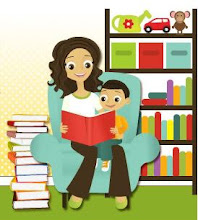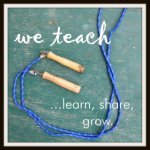Often, we early childhood teachers turn their focus to the skills that look nice and neat on a checklist - recognizing letters and numbers, assembling a puzzle, pedaling a tricycle. It is often more challenging to assess a child's social and emotional development. Often, parents ask the preschool teacher, "Is my child ready for kindergarten?" And the discussion usually begins, and too often ends, with talking about STUFF the child "knows" - the cognitive aspect of development. But we know that being “ready” for school is so much more that letters, numbers, and shapes! We need to raise children who are NICE human beings – the kind who know how to get along with others. Here are a few books that will turn the classroom spotlight onto behaviors that promote love, peace, and kindness. Go hug somebody!

I Did It, I'm Sorry by Caralyn Buehner: This book has different behavioral scenarios followed by multiple choice answers. It’s a great book to read over time or teachers can read scenarios that relate to things that are happening in the classroom. A preschool teacher I work with reads one scenario each day and the children have the opportunity to discuss and illustrate the best choice. (Thanks to Ms. Renee for sharing this book and idea with me!)

It’s Mine! by Leo Lioni: Three frogs learn the value of sharing. Here’s a spin on “Show and Tell.” Instead of calling it Show and Tell, I called it Sharing Day. Depending on the number of children in your class, you can have Sharing Day 2-5 times a week. I assigned one day of the week to 3-5 children. For example, Billy, Monica, and Susanne might have Sharing Day on Monday; Kayla, Lauren, and David would be assigned to Tuesday, etc (I made a huge chart with the days of the week across the top and children’s names and pictures under each day – this way children and parents would remember their day). During Sharing Time, each child gets to sit in the rocking chair and tell us three things about their item. The rest of the students get to ask questions (learning to ask appropriate and relevant questions is a skill that children can learn in Pre-K and K – I used to tell the students, a question is something that you want to know about your friend’s item). After the children told us about the items, we would sit them on a special shelf for other children to actually play with. Sharing is a skill that children are just learning and sharing something that they brought from home is hard. So keep it short so that the child can return his item to his/her cubby. The other children learn how to be extra careful with an item that belongs to someone else. Of course, in the beginning of the year, I send home a note to parents about the goals and procedures of Sharing Time; this way, parents understand that it’s not wise to send something that is irreplaceable or extremely valuable. You can also visit my previous article for more ideas on It's Mine by Leo Lioni!

The Rainbow Fish by Marcus Pfister: The most beautiful fish in the ocean won’t share his shiny scales which leaves him lonely. As a follow up art activity, give each child a few pre-cut fish scales (finger-paint paper works well since it’s shiny and flexible). Allow them to paint them various colors (“marbling” works well too) and sprinkle with glitter. When they are all dry, attach them to one big Rainbow Fish to hang in the classroom. Looking for more, fishy ideas?

Because of You by B.G. Hennessy: Children learn that they have can have a positive impact in the world. Even young children can learn the value of volunteer service. Children can (with the help of parents) collect hats/mittens for a local shelter, paint a mural for a local senior citizen’s building, sing songs at a nursing home, or help students in a younger classroom.

Swimmy by Leo Lioni: Swimmy and his friends learn that teamwork works! Make a bulletin board display entitled “Fishing for Teamwork” and post photographs (with captions) of children engaged in everyday teamwork activities. Examples: cleaning up block area together, carrying a tub of sand, sharing play-dough, etc. You’ll find that as you start to highlight teamwork, the children will bring instances of teamwork to your attention so that you can put it on the bulletin board.


Can You Say Peace? By Karen Katz and The Peace Book by Todd Parr are both books that help make an abstract concept, such as peace, meaningful to young children. Make a peace mobile or learn about the kindness campaign by visiting Celebrating Peace. SOMETHING TO CONSIDER: During this time of war, we have to be considerate and respectful of our troops. Be mindful if children begin to talk about war and/or soldiers. Regardless of our grown-up opinions of the war, we don’t want to suggest to children that our troops are not peaceful. It is hard for children to understand that soldiers, who children may associate with weapons, are peaceful. It is most important that you tread these waters carefully since some of your students may have family members who are in the Armed Forces.

Teaching Peace by Red Grammer OK, OK, OK.... so this one isn't really a book. But the songs on this CD will encourage and inspire! With songs such as Teaching Peace, Say Hi, and I Think You're Wonderful, you and your children will be singing these catchy lyrics in no time.

Join In and Play by Cheri Meiners: This book is part of a series that includes Talk and Work it Out, Share and Take Turns, Be Polite and Kind, and Understand and Care. They make a great addition to a classroom library since they can help children discuss real-case scenarios, feelings, and possible solutions. Of course, real-life situations are often the best teachable moments but these books can help children begin to think about their feelings and the feelings of others.
























No comments:
Post a Comment